TEKS Math 6
(1) The desire to achieve educational excellence is the driving force behind the Texas essential knowledge and skills for mathematics, guided by the college and career readiness standards. By embedding statistics, probability, and finance, while focusing on computational thinking, mathematical fluency, and solid understanding, Texas will lead the way in mathematics education and prepare all Texas students for the challenges they will face in the 21st century.
(2) The process standards describe ways in which students are expected to engage in the content. The placement of the process standards at the beginning of the knowledge and skills listed for each grade and course is intentional. The process standards weave the other knowledge and skills together so that students may be successful problem solvers and use mathematics efficiently and effectively in daily life. The process standards are integrated at every grade level and course. When possible, students will apply mathematics to problems arising in everyday life, society, and the workplace. Students will use a problem-solving model that incorporates analyzing given information, formulating a plan or strategy, determining a solution, justifying the solution, and evaluating the problem-solving process and the reasonableness of the solution. Students will select appropriate tools such as real objects, manipulatives, algorithms, paper and pencil, and technology and techniques such as mental math, estimation, number sense, and generalization and abstraction to solve problems. Students will effectively communicate mathematical ideas, reasoning, and their implications using multiple representations such as symbols, diagrams, graphs, computer programs, and language. Students will use mathematical relationships to generate solutions and make connections and predictions. Students will analyze mathematical relationships to connect and communicate mathematical ideas. Students will display, explain, or justify mathematical ideas and arguments using precise mathematical language in written or oral communication.
(3) The primary focal areas in Grade 6 are number and operations; proportionality; expressions, equations, and relationships; and measurement and data. Students use concepts, algorithms, and properties of rational numbers to explore mathematical relationships and to describe increasingly complex situations. Students use concepts of proportionality to explore, develop, and communicate mathematical relationships. Students use algebraic thinking to describe how a change in one quantity in a relationship results in a change in the other. Students connect verbal, numeric, graphic, and symbolic representations of relationships, including equations and inequalities. Students use geometric properties and relationships, as well as spatial reasoning, to model and analyze situations and solve problems. Students communicate information about geometric figures or situations by quantifying attributes, generalize procedures from measurement experiences, and use the procedures to solve problems. Students use appropriate statistics, representations of data, and reasoning to draw conclusions, evaluate arguments, and make recommendations. While the use of all types of technology is important, the emphasis on algebra readiness skills necessitates the implementation of graphing technology.
(4) Statements that contain the word "including" reference content that must be mastered, while those containing the phrase "such as" are intended as possible illustrative examples.
- Plus Plan
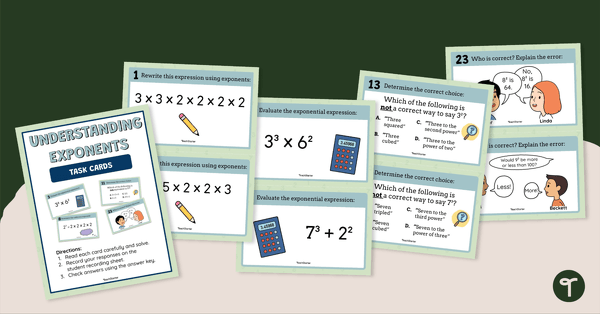
Understanding Exponents – Task Cards
Practice rewriting, comparing, and evaluating expressions with exponents with this set of task cards.
- Plus Plan
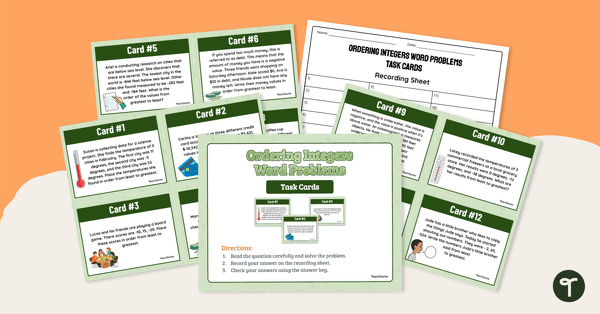
Ordering Integers – Word Problem Task Cards
Build confidence with ordering positive and negative numbers with this set of word problem task cards.
- Plus Plan
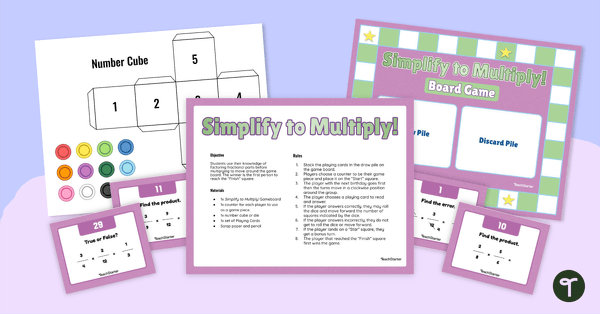
Simplify to Multiply – Multiplying Fractions Board Game
Practice how to simplify fractions before multiplying with this board game.
- Plus Plan
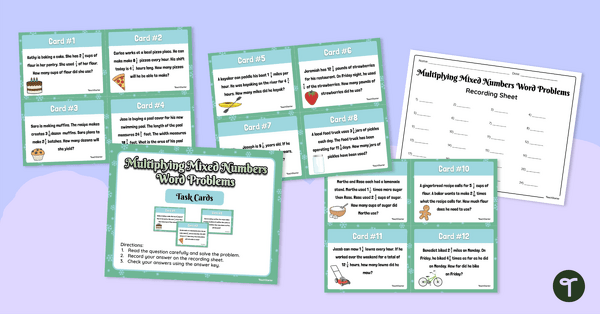
Multiplying Mixed Numbers – Word Problem Task Cards
Improve understanding of how to multiply mixed numbers with this set of 24 word problem task cards.
- Plus Plan
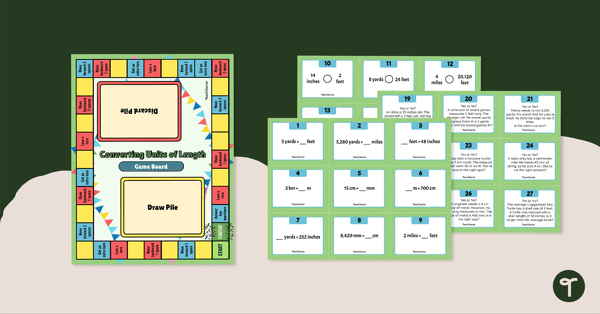
Converting Units of Length – Board Game
Engage your students with a lively board game while practicing how to convert customary and metric units of length.
- Plus Plan

2-D Shapes and Their Attributes - Interactive PowerPoint
Practice identifying the attributes of different 2D shapes with this 90-slide interactive PowerPoint.
- Plus Plan
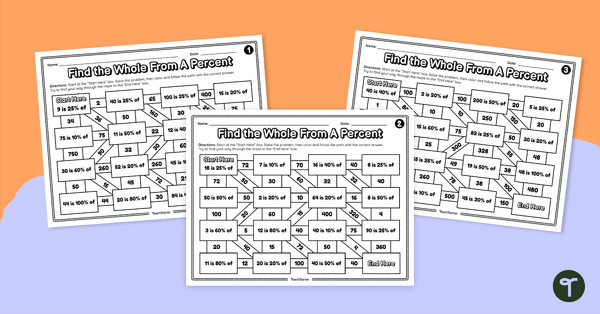
Find the Whole From a Percent – Math Mazes
Find your way through this set of 3 math mazes while solving 6th-grade percentage problems.
- Plus Plan
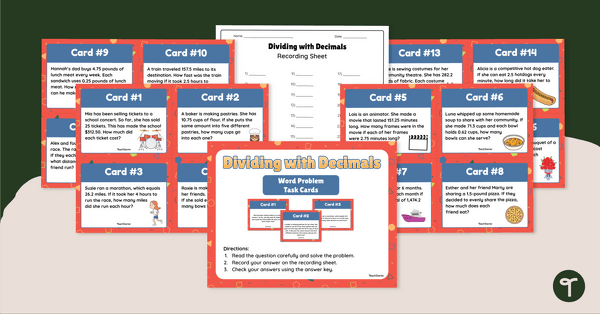
Dividing with Decimals – Word Problem Task Cards
Sharpen decimal division skills while solving a variety of word problems with this set of 24 task cards.
- Plus Plan
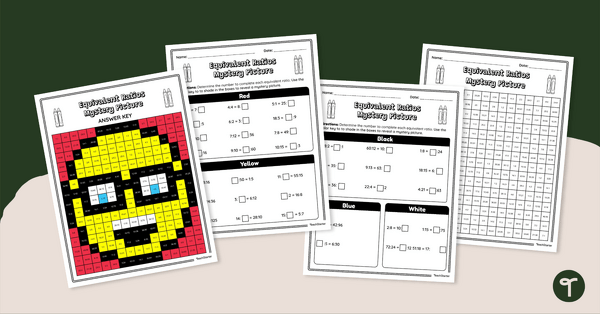
Equivalent Ratios – Mystery Picture Worksheet
Practice how to find equivalent ratios with this color-by-number worksheet.
- Plus Plan
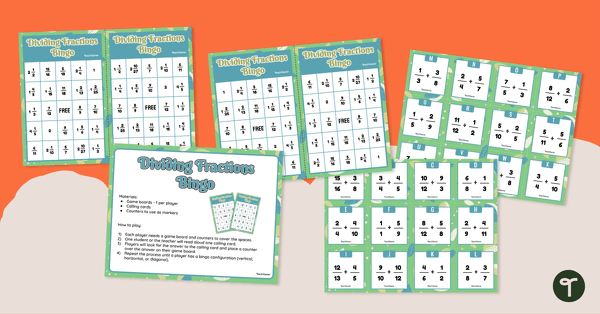
Dividing Fractions Bingo
Master the ability to divide fractions with a whole-class bingo game.
- Plus Plan
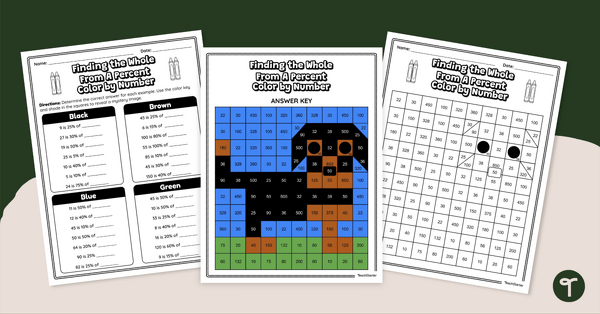
Finding the Whole From a Percent – Mystery Image Worksheet
Practice how to find the whole from a percent with this color-by-number worksheet.
- Plus Plan
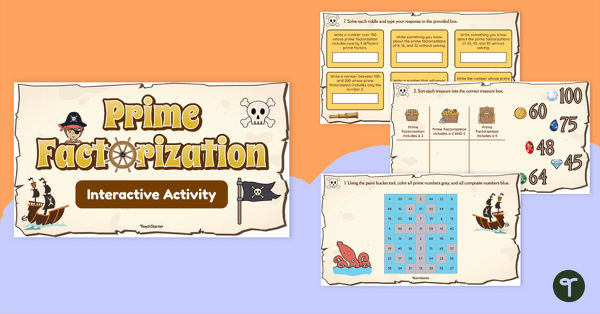
Prime Factorization – Google Slides Interactive Activity
Determine the prime factorization of a number with this set of interactive activities.
- Plus Plan
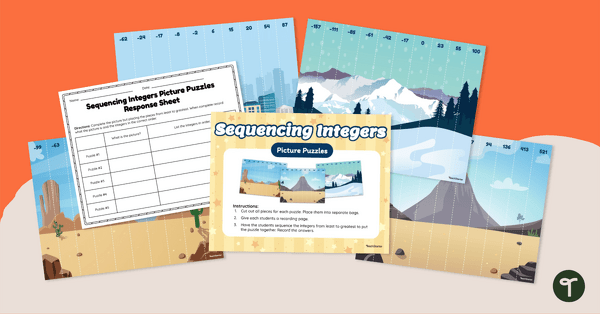
Sequencing Integers – Picture Puzzles
Practice ordering positive and negative numbers with a set of picture puzzles.
- Plus Plan
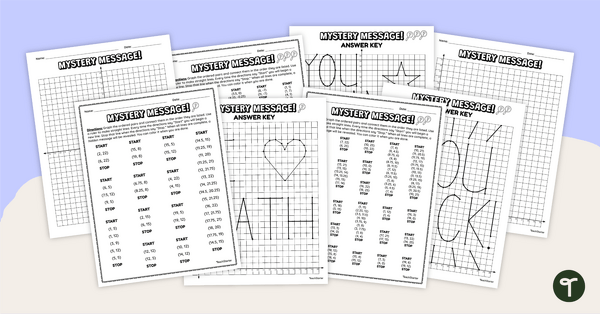
Coordinate Grids Mystery Pictures
Practice plotting on coordinate grids with this set of differentiated mystery pictures.
- Plus Plan

Multiplying Fractions – Google Slides Interactive Activity
Challenge your students to multiply fractions while completing 7 different tasks with this Google slides interactive activity.
- Plus Plan
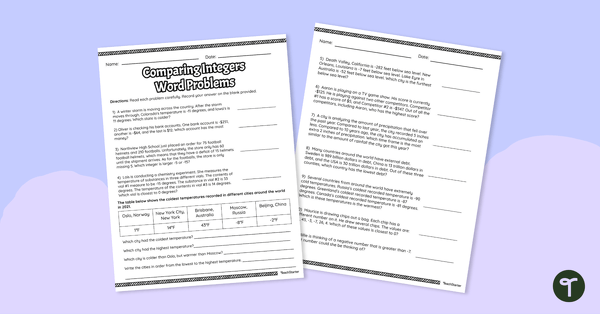
Comparing Integers – Word Problem Worksheet
Interpret word problems while comparing integers with this math worksheet.
- Plus Plan
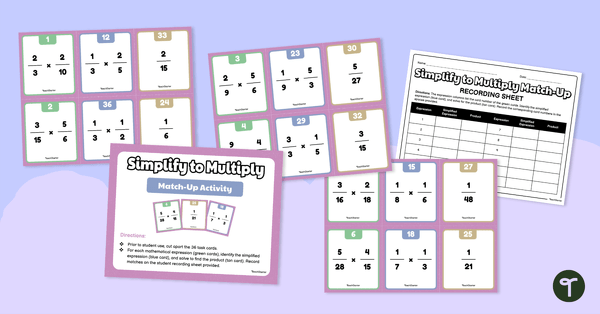
Simplify to Multiply – Multiplying Fractions Match-Up Activity
Practice simplifying before multiplying fractions with this match-up activity.
- Plus Plan
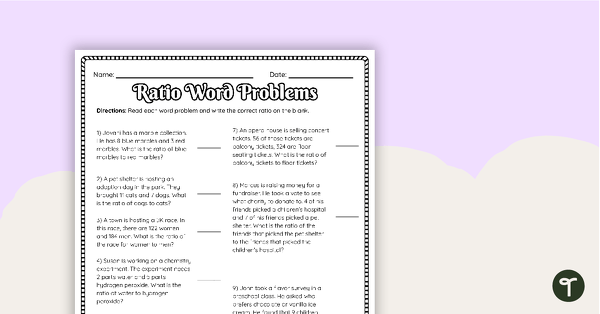
Ratio Word Problems – Worksheet
Use this worksheet to demonstrate an understanding of the concept of a ratio and use ratio language to describe a relationship between two quantities.
- Free Plan
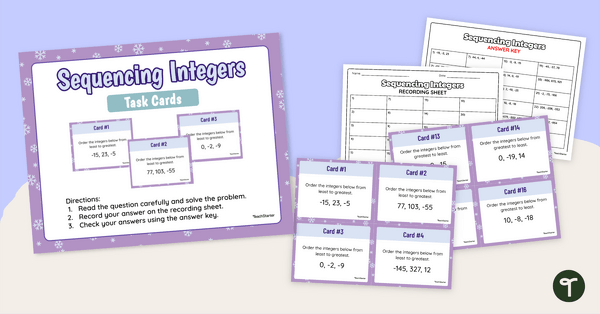
Ordering Integers Activity — Task Cards
Introduce this ordering integers activity to your students to give them experience ordering positive and negative numbers.
- Plus Plan
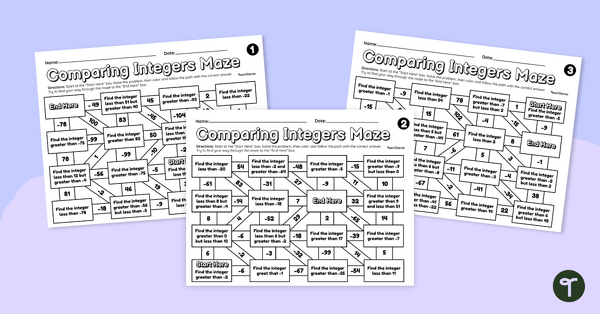
Comparing Integers – Math Mazes
Compare positive and negative numbers while you work your way through this set of math mazes.
- Plus Plan
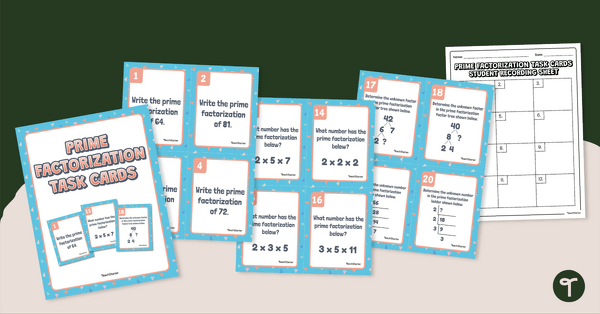
Prime Factorization – Task Cards
Practice how to find the prime factorization of a number with this set of 24 task cards
- Plus Plan
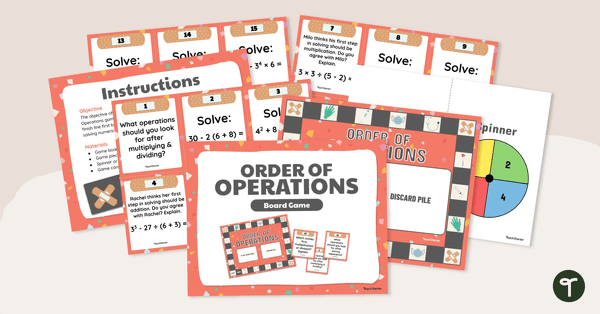
Order of Operations Board Game
Engage your students with a lively board game while using the order of operations to solve numerical expressions.
- Plus Plan
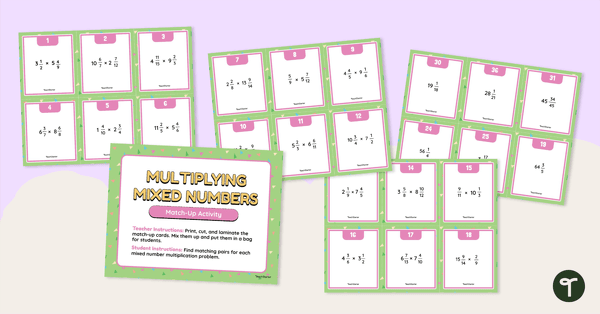
Multiplying Mixed Numbers – Match-Up Activity
Strengthen student understanding of how to multiply mixed numbers with this match-up activity.
- Plus Plan
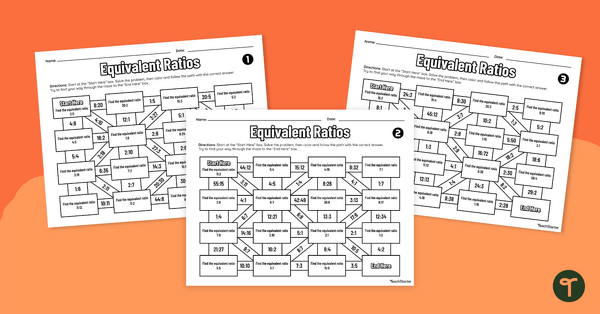
Equivalent Ratios – Math Mazes
Practice how to find equivalent ratios with this set of math mazes.
- Plus Plan
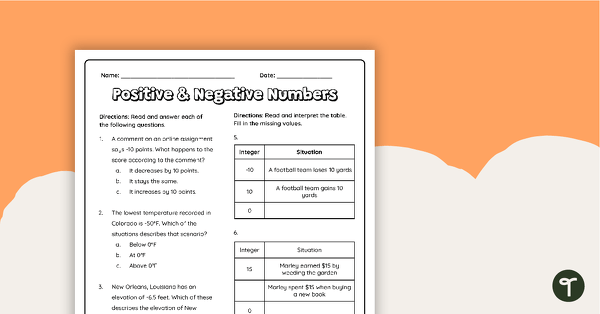
Positive & Negative Numbers – Worksheet
Use positive and negative numbers to represent quantities in real-world scenarios with this worksheet.
- Plus Plan
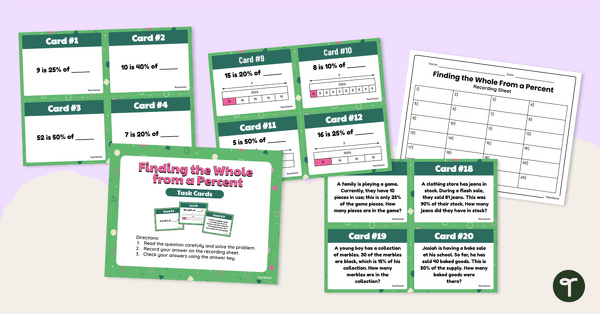
Finding the Whole From a Percent – Task Cards
Practice how to find the whole from a percent with this set of task cards.
- Plus Plan

Converting Percentages – Math Mazes
Practice converting fractions, decimals, and percentages with this set of math mazes.
- Free Plan
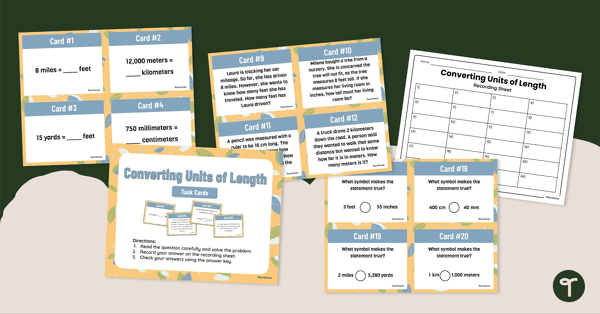
Converting Units of Length – Task Cards
Use ratio reasoning to convert the length of metric and customary units with this set of 24 task cards.
- Plus Plan
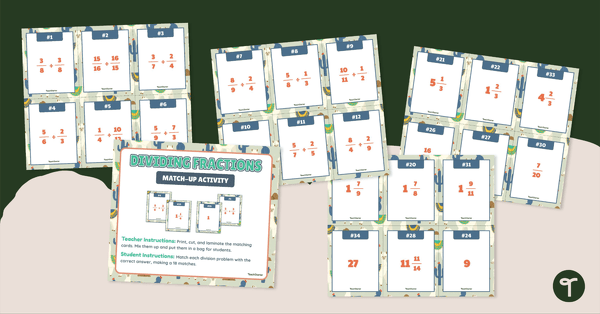
Dividing Fractions Match-Up Activity
Reinforce how to divide a fraction by a fraction with this printable match-up activity.
- Plus Plan
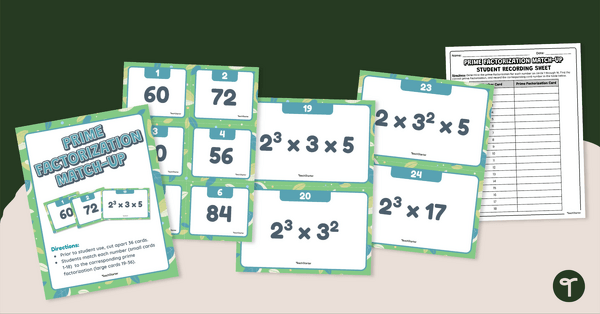
Prime Factorization Match-Up
Practice how to find the prime factorization of a number with this match-up activity.
- Plus Plan
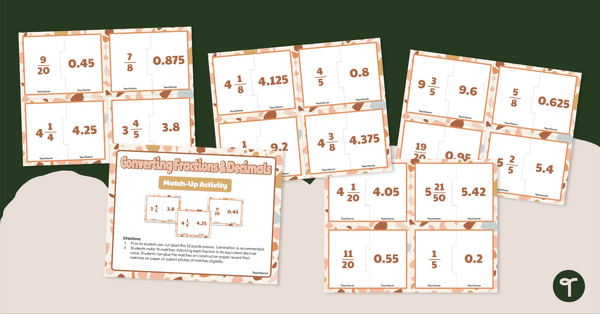
Converting Fractions and Decimals Match-Up Activity
Have students practice how to convert a fraction to a decimal with this match-up activity perfect for math rotations.
- Plus Plan
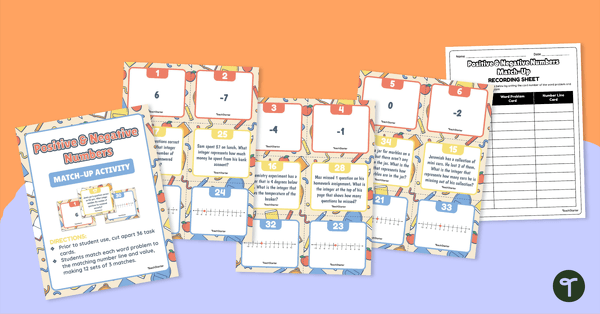
Positive and Negative Numbers – Match-Up Activity
Use positive and negative numbers to represent quantities in real-world contexts with this match-up activity.